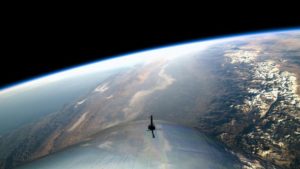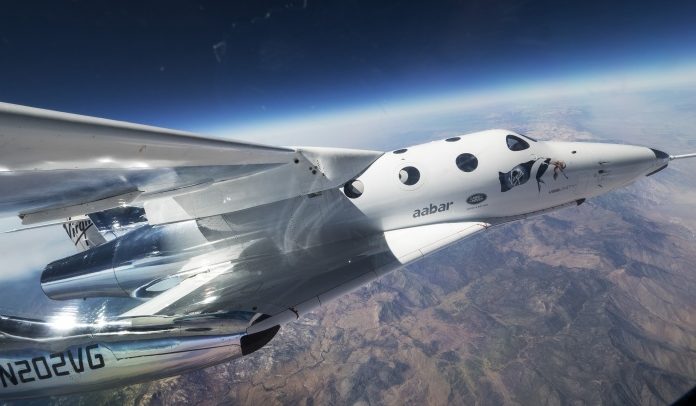Virgin Galactic’s space tourism business ambitions to make it a reality were given a great boost when the company successfully launched a tourism rocket plane into space for the first time.During a test flight last thursday. A great milestone for CEO Richard Branson’s aerospace empire.
Though Virgin Galactic will ultimately serve as the space-tourism arm of British tycoon Branson’s aerospace business who is striving to send tourists to space at a cost of USD 250,000 per seat,SpaceShipTwo was ferrying four payloads from NASA, meant to assemble data to be used in the space agency’s upcoming missions.
SpaceShipTwo, the company’s suborbital space plane, was ferried to an altitude of 50,000 feet by WhiteKnightTwo, a twin-fuselage carrier aircraft. Once freed from mothership, SpaceShipTwo activated its rocket motor and soared to an altitude of about 50 miles above the Earth’s surface.
Virgin Galactic’s SpaceShipTwo has landed landed back at California’s Mojave Airport around 8:15 a.m. PST.The vehicle was welcomed on its return to cheers from Richard Branson and the teams from Virgin Galactic and the Spaceship Company.Significantly this is not only the first human spaceflight to be launched from American soil since the final Space Shuttle mission in 2011, but for the first time a crewed vehicle built for commercial, passenger service, has reached space.
The Federal Aviation Administration has recognised this achievement who announced that early next year they will present pilots Mark Stucky and Frederick Sturckow with FAA Commercial Astronaut Wings at a ceremony in Washington.Four-time Space Shuttle pilot Sturckow, will become the only person to have been awarded NASA and FAA wings.

The company shared updates on its Twitter account throughout the mission:
This happened to be the fourth test of Virgin Galactic’s SpaceShipTwo. The company used the occurrence to test the aircraft’s various in-flight capabilities, flying it higher than all previous missions and burning the rocket motor for a longer period of time.On Wednesday, the company further elaborated on the purpose of the mission during its press meet:
“[It will reveal] new and important data points, particularly relating to supersonic handling qualities and thermal dynamics, both of which we will be watching closely in the cockpit and on the ground in Mission Control. These observations will largely determine at what stage we decide to shut the rocket motor down.”
The spaceflight, which was witnessed by a large crowd of staff and their families, as well as special guests and media, saw a 60 second planned rocket motor burn which propelled VSS Unity to almost three times the speed of sound and to an apogee of 51.4 miles.
As VSS Unity coasted upwards through the black sky and into space, Virgin Galactic Mission Control confirmed the news and congratulated the two astronaut pilots: “Unity, welcome to space”.
Commenting from the flight line Branson said: “Many of you will know how important the dream of space travel is to me personally.
“Ever since I watched the moon landings as a child I have looked up to the skies with wonder.
“We started Virgin nearly 50 years ago dreaming big and loving a challenge.
“Today, as I stood among a truly remarkable group of people with our eyes on the stars, we saw our biggest dream and our toughest challenge to date fulfilled.
“It was an indescribable feeling: joy, relief, exhilaration and anticipation for what is yet to come.”

